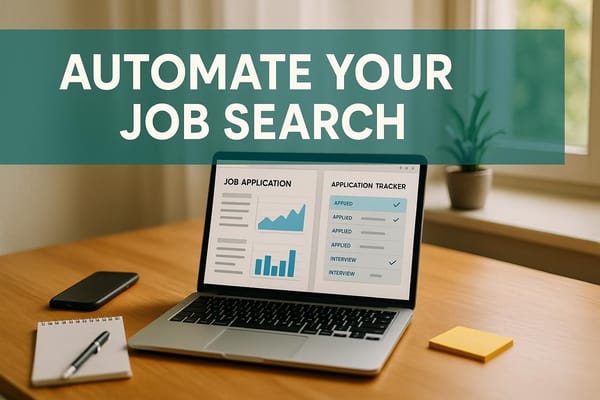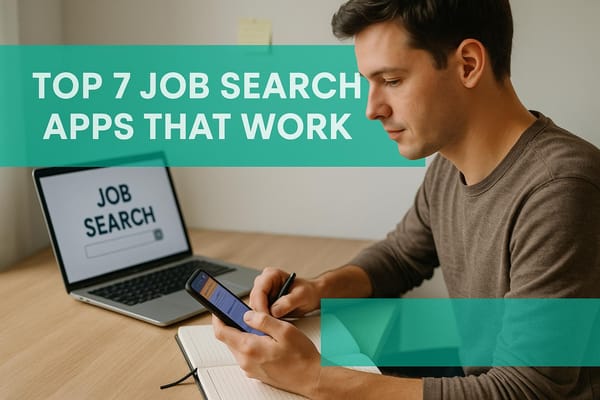AI Job Matching: Role of Feedback Loops Explained
Explore how AI job matching systems utilize feedback loops to enhance hiring accuracy, speed, and satisfaction for candidates and employers.
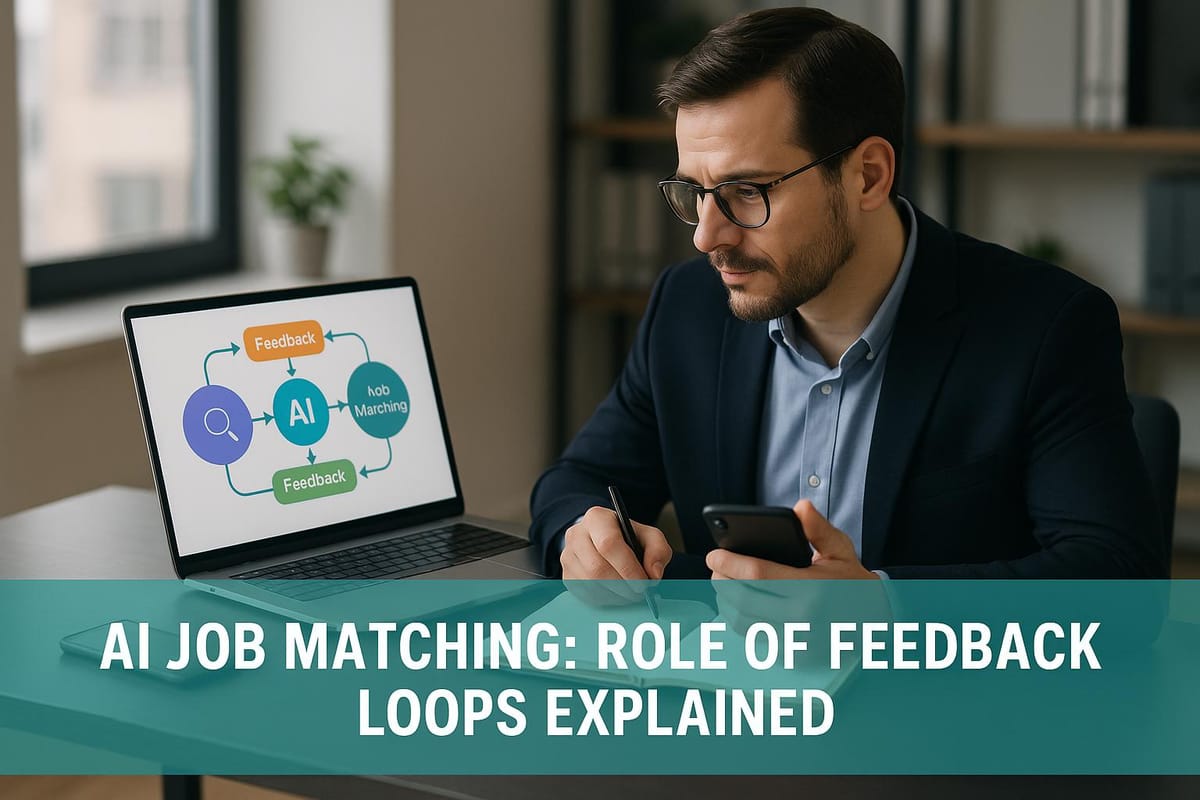
AI job matching systems are transforming how job seekers and employers connect by using feedback loops to continuously improve recommendations. These systems analyze data from every interaction - like hiring outcomes, candidate behavior, and recruiter feedback - to refine their algorithms and deliver better matches over time. Here's what you need to know:
- How it works: AI builds detailed profiles for candidates and employers, considering skills, experience, preferences, and even long-term goals. Feedback loops allow the system to learn from hiring outcomes and adjust recommendations dynamically.
- Why it matters: Feedback loops help improve matching accuracy, reduce hiring time, and increase satisfaction for both job seekers and employers.
- Key features: Real-time updates, bias detection, and post-hire performance tracking make these systems smarter and more precise with each interaction.
- Platform comparison: Services like scale.jobs combine AI with human oversight, offering tailored applications, ATS-friendly resumes, and transparent pricing, setting them apart from competitors like Simplify.jobs and LazyApply.
AI job matching with feedback loops is shaping the future of hiring, offering faster, more accurate, and personalized results for everyone involved.
How Do Job Board Algorithms Match Candidates? - Job Success Network
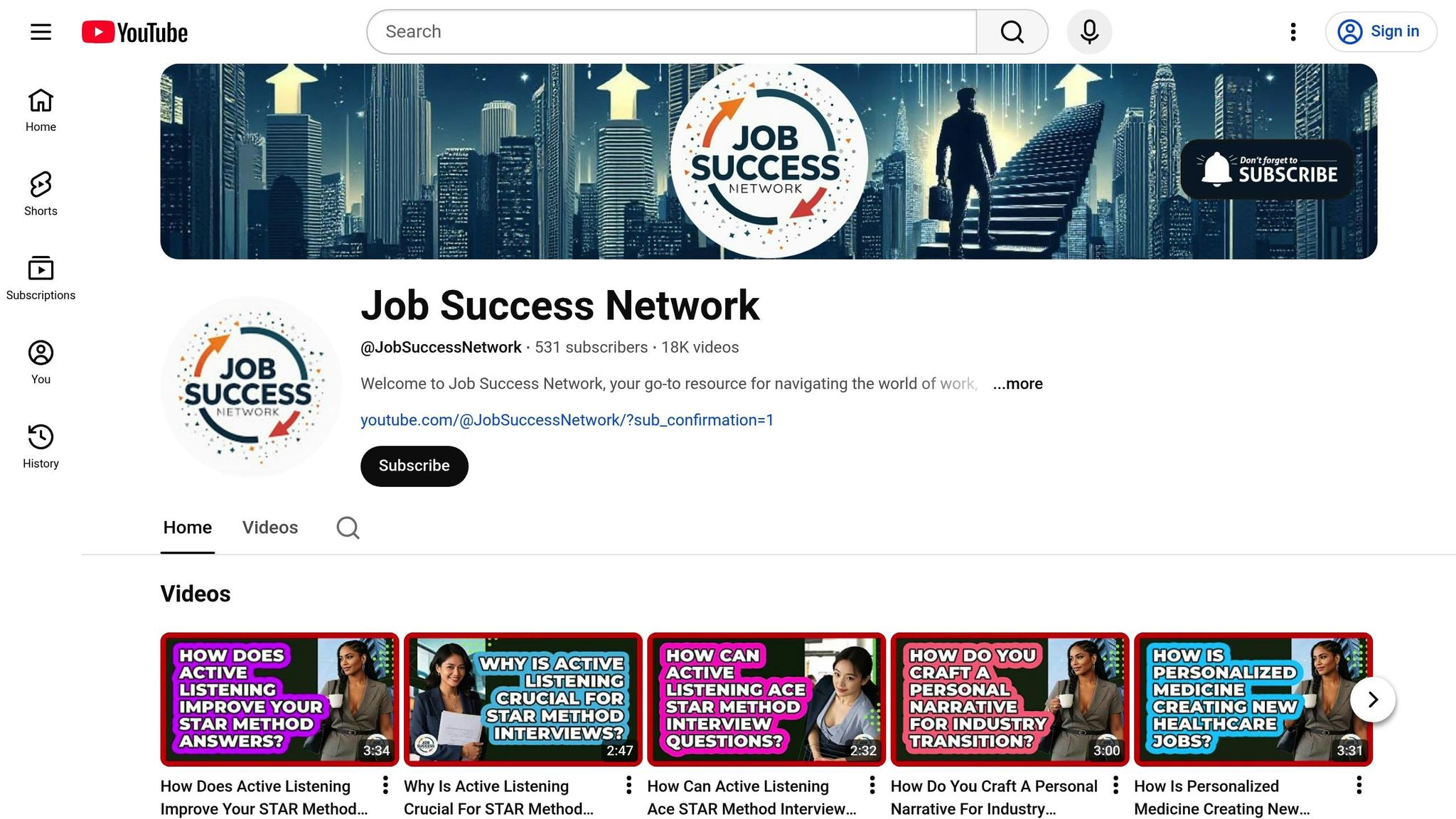
How Feedback Loops Work in AI Job Matching Systems
Feedback loops are the secret sauce behind AI job matching systems, enabling them to outshine traditional hiring methods. These loops involve three interconnected processes that continuously refine how well candidates are matched with opportunities, benefiting both job seekers and employers.
Data Collection and Input
Everything starts with gathering data. AI job matching systems pull information from various points in the hiring process, creating a robust dataset that powers algorithm improvements.
- User behavior data: This includes everything from the jobs candidates click on to how long they spend reviewing postings, which roles they save or share, and whether they apply or simply bookmark positions. These behaviors provide the system with valuable insights into preferences and interests.
- Hiring outcomes: The system tracks key milestones like interview invitations, multiple interview rounds, or successful hires. Negative signals, such as rejections, withdrawn applications, or unfilled positions, are just as important for fine-tuning the process.
- Recruiter and hiring manager feedback: Direct input from recruiters adds another layer of depth. Some platforms collect structured feedback on why a candidate wasn’t selected, helping the AI understand specific requirements that might not be obvious from job descriptions alone.
- Post-hire performance data: This advanced feedback tracks how well new hires perform in their roles, using metrics like performance reviews, retention rates, and promotions. These insights help the system identify traits that predict long-term success, not just initial fit.
Algorithm Adjustment and Learning
Once the data is collected, the system uses it to fine-tune its algorithms, ensuring better matches over time.
- Weighted scoring adjustments: The system tweaks how it evaluates candidates based on real-world success. For example, if candidates with certain skills consistently excel in specific roles, those skills are given more importance in future matches. Conversely, qualifications that don’t correlate with success are deprioritized.
- Feature discovery: The AI uncovers new patterns in the data. For instance, it might find that candidates with frequent job changes thrive in startups, or that certain degrees lead to unexpected success in niche industries.
- Contextual learning: The algorithm adapts to factors like market trends, company growth stages, or team needs. Instead of using a one-size-fits-all approach, it tailors recommendations to specific scenarios.
- Bias detection and correction: The system identifies and addresses biases, ensuring that demographic groups aren’t systematically over- or under-represented in matches. This helps companies build diverse teams while maintaining high-quality matches.
These adjustments allow the system to evolve constantly, responding to new data in real time.
Real-Time Feedback Integration
How quickly an AI system can adapt depends on how it integrates feedback. Real-time updates ensure that new information immediately impacts future matches.
- Immediate pattern recognition: The system quickly detects changes, such as a shift toward cost-effective hiring during economic downturns. Within days, it adjusts recommendations to align with current priorities.
- Dynamic preference learning: Candidate and employer profiles are updated based on recent activity. If a job seeker starts favoring remote roles, the system picks up on this and prioritizes remote opportunities.
- Accuracy monitoring: The system tracks how well its matches perform. If a particular type of recommendation starts to falter, it makes quick adjustments to prevent a drop in quality.
- Seasonal and cyclical adjustments: The AI learns to recognize recurring hiring patterns. For example, it knows that certain industries hire more in specific quarters, that new graduates flood the job market in late spring, and that hiring slows during the holidays. This awareness ensures better timing and prioritization.
Benefits of Feedback Loops in AI Job Matching
Feedback loops turn AI job matching systems into dynamic, ever-improving platforms that adapt and learn from their own performance.
Better Accuracy in Matching
Refined algorithms powered by feedback loops significantly enhance matching accuracy. By analyzing past outcomes, AI systems can adjust their criteria to identify the candidate traits that lead to successful hires. These real-time updates ensure job seekers are presented with roles that better match their skills, experiences, and preferences, including location and work style. At the same time, employers receive applications from candidates who are more aligned with their requirements.
Higher Candidate and Employer Satisfaction
When matches are more precise, both job seekers and employers benefit. Job seekers get tailored recommendations that genuinely reflect their abilities and preferences, saving them from wasting time on unsuitable opportunities. For employers, this means fewer irrelevant applications to sort through, streamlining the hiring process and increasing satisfaction all around.
Faster Time-to-Fill Positions
Feedback loops also speed up hiring by learning from successful placements. The system can identify candidates who are ready and motivated for a job change, prioritizing them in recommendations. This focus allows recruiters to concentrate on the most promising applicants, cutting down on delays and filling roles faster. These improvements highlight how AI is reshaping recruitment into a more efficient and targeted process.
Comparison of AI Job Matching Platforms with Feedback Loops
AI-driven job matching platforms that incorporate feedback loops vary widely in how they operate and perform. A closer look at scale.jobs, alongside traditional recruitment platforms and AI-only competitors, highlights the unique advantages feedback loops bring to the table.
scale.jobs vs Traditional Recruitment Platforms
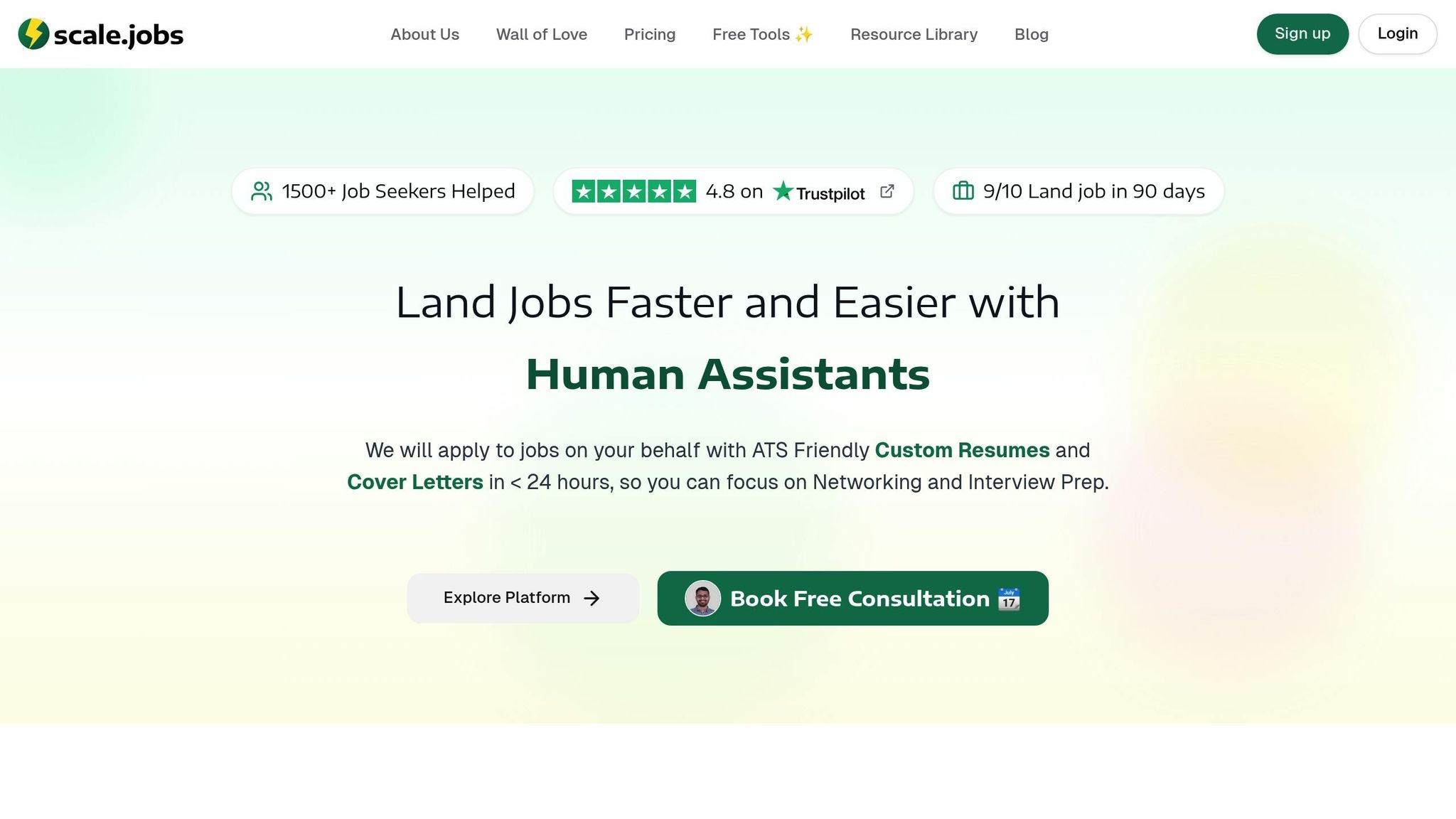
Traditional recruitment platforms often rely on simple keyword matching and filtering, which can result in irrelevant job matches and a flood of unsuitable applications. scale.jobs, on the other hand, combines AI feedback loops with human oversight to deliver a more refined and effective approach. By analyzing user preferences and application outcomes, the platform adapts and improves, enabling its human assistants to submit applications that are more closely aligned with your needs.
Another standout feature is real-time WhatsApp updates and proof-of-work screenshots, which offer transparency and keep users in the loop. This feedback mechanism not only keeps you informed but also enhances the platform's ability to fine-tune its matching accuracy.
Cost is another area where scale.jobs stands apart. Traditional services often come with steep agency fees, while scale.jobs uses a flat-fee model starting at $199 for 250 applications. This eliminates recurring subscriptions and unexpected charges, making it a more predictable and affordable option.
scale.jobs vs Competitors with Similar Features
AI-only competitors like Simplify.jobs and LazyApply have also entered the job application space, but their methods differ significantly from scale.jobs' approach, which blends AI insights with human involvement.
For instance, Simplify.jobs offers one-click applications, relying entirely on automation. While convenient, this method can sometimes raise red flags with applicant tracking systems (ATS). In contrast, scale.jobs integrates human virtual assistants who manually complete each application, ensuring a personalized touch that minimizes automation-related issues.
Similarly, LazyApply provides bulk application services, but it lacks the in-depth feedback integration that scale.jobs offers. Instead of generic submissions, scale.jobs uses feedback loops to craft ATS-optimized resumes and cover letters, increasing the likelihood of a positive response. This continuous refinement gives scale.jobs an edge over platforms that rely solely on automated bulk submissions.
Communication is another area where scale.jobs excels. Many competitors rely on email tickets or chatbots for support, but scale.jobs provides dedicated WhatsApp communication with real people. This allows for real-time updates and adjustments to your application strategy based on immediate feedback.
Lastly, pricing transparency is a key differentiator. With a flat-fee structure and options for unused credit refunds, scale.jobs ensures you know exactly what you're paying for. This straightforward pricing aligns the platform's success with your own, while its suite of job search tools benefits from the continuous flow of feedback, creating a seamless and effective job application experience.
Future of Feedback Loops in AI Job Matching
AI-driven feedback loops in job matching are advancing rapidly, fueled by machine learning and an increasing demand for precision. These systems are transforming the way job seekers and employers connect, creating opportunities that were once hard to imagine.
Emerging Trends in AI Feedback Systems
Predictive analytics is taking center stage in reshaping feedback-driven AI. By analyzing historical hiring trends, candidate success stories, and employer preferences, these algorithms can predict matches with a higher likelihood of long-term success. Beyond simple keyword searches, modern systems now consider factors like workplace compatibility, career growth potential, and employee retention - using continuous feedback to refine their predictions.
Natural Language Processing (NLP) is also making waves, enabling AI to interpret both structured and unstructured feedback with greater depth. This means the system can extract subtle insights from diverse data sources, leading to more accurate and meaningful job recommendations.
Real-time personalization engines are another exciting development. These systems track user behaviors - like how long someone spends on a job description or their interest in specific perks - and instantly update profiles for both candidates and employers. This dynamic adjustment ensures that recommendations stay relevant and tailored.
Additionally, multi-modal feedback is expanding the scope of these systems. By incorporating data from video interviews, skills tests, and performance metrics, AI can create a more complete picture of what makes a successful match. These insights often uncover patterns that human recruiters might overlook, improving efficiency and outcomes for everyone involved.
Together, these advancements are not just refining the hiring process but enhancing the overall experience for job seekers and employers alike.
Benefits for Job Seekers and Employers
For job seekers, the improvements in feedback loops mean better matches and less frustration during the application process. With more targeted recommendations, candidates can focus their efforts where they’re most likely to succeed. Platforms like scale.jobs combine AI insights with human expertise to craft personalized applications, giving candidates a competitive edge. Additionally, advanced feedback systems provide transparency, helping applicants understand why they succeed or fail - an especially helpful feature for international candidates navigating complex hiring landscapes.
Employers also gain significant advantages. Faster hiring times and higher-quality candidates are just the beginning. Enhanced feedback loops enable recruiters to identify top talent earlier in the process, cutting down on lengthy screening rounds. Many companies report shorter hiring cycles, saving time and reducing costs.
Moreover, these systems are helping tackle issues like bias in hiring. By monitoring outcomes across diverse demographic groups, feedback-driven AI can identify and address potential inequities, promoting fairer recruitment practices without sacrificing efficiency.
Looking ahead, feedback loops are set to play an even bigger role throughout the employment journey. From the initial job search to onboarding and long-term career development, these systems promise to create more fulfilling career paths for individuals while delivering better hiring outcomes for organizations. This evolution is redefining how we think about the relationship between work and workers.
Conclusion: Why Feedback Loops Are Changing AI Job Matching
As we've explored, feedback loops are reshaping the way AI handles job matching. These systems turn rigid algorithms into adaptable tools that improve with every interaction, creating a smoother, more precise experience for both job seekers and employers.
Here’s how feedback-driven AI job matching stands out:
- Improved accuracy as the system continuously learns
- Shorter hiring timelines, saving both time and money
- Greater satisfaction for candidates and employers alike
Platforms like scale.jobs are at the forefront of this shift, combining AI-powered feedback with human expertise. They offer tailored job recommendations while steering clear of common automation missteps. These platforms also provide valuable insights, helping users understand why certain matches are suggested and how they can enhance their profiles. This approach is particularly helpful for international candidates and recent tech graduates navigating the job market.
What’s more, feedback loops are leveling the playing field. By reducing bias and refining match accuracy, they open doors to quality job opportunities for a more diverse pool of candidates. Employers, in turn, benefit from faster hiring processes and stronger candidate pools - something traditional recruitment methods often struggle to achieve.
As technology evolves, integrating multi-modal feedback - like video interviews and skills assessments - will push AI job matching even further. For job seekers, choosing platforms that embrace advanced feedback systems is no longer optional; it’s becoming essential. The blend of AI’s analytical power and human oversight, as seen with platforms like scale.jobs, is redefining job matching for a complex and competitive employment landscape. Feedback loops aren’t just a trend - they’re the future of smarter, more effective hiring.
FAQs
How do feedback loops in AI job-matching systems reduce bias in hiring?
Feedback loops in AI job-matching systems are essential for refining decision-making and reducing bias. These loops rely on real-time data from user interactions, like employer preferences and jobseeker behavior, to fine-tune algorithms and improve results.
For instance, if the system detects a bias - such as favoring specific demographics - it can recalibrate its recommendations to prioritize skills and qualifications over unrelated factors. By continuously processing and adjusting based on new data, feedback loops contribute to a hiring process that’s more inclusive and centered on merit, ultimately broadening access to job opportunities for a diverse range of candidates.
How does post-hire performance data enhance AI job matching systems?
Post-hire performance data is a game-changer for improving AI-driven job-matching systems. By examining how well employees perform after being hired, these systems can uncover trends and patterns that signal a successful match. This feedback allows the algorithms to adjust and refine the criteria they use, leading to smarter and more precise job recommendations.
Take this as an example: if employees with specific skills or qualifications consistently excel in their roles, the AI can start prioritizing those traits during the matching process. Over time, this creates a powerful feedback loop. The result? Better job matches, happier employees, and improved retention rates - all of which benefit both employers and job seekers.
How does real-time feedback improve AI job-matching platforms?
Real-time feedback loops play a key role in improving the performance of AI-driven job-matching platforms. These systems adapt and refine their algorithms based on user input, such as ratings on job matches or updates to preferences. This ongoing learning process allows the platform to provide increasingly accurate and personalized recommendations.
By staying responsive to user interactions, these platforms help job seekers uncover roles that align more closely with their skills and career goals. At the same time, recruiters benefit by finding qualified candidates more quickly. Integrating real-time feedback ensures a smoother, more tailored experience for everyone involved.

